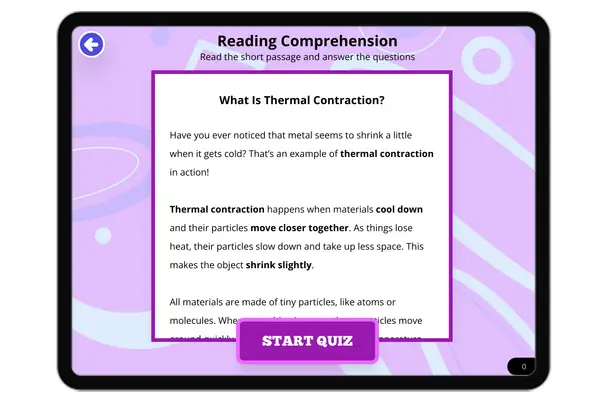What Is Gravitational Energy? — Passage
Gravitational energy is a type of potential energy. It is the energy stored in an object because of its position above the ground. The higher an object is, the more gravitational energy it has. This is because gravity is always pulling things down toward Earth.
For example, when you hold a book above your head, it has more gravitational energy than when it’s on a table. If you drop it, the energy changes from potential to kinetic energy as it falls. The heavier the object and the higher it's lifted, the more gravitational energy it stores.
Gravitational energy is all around us. Water in a mountain reservoir has gravitational energy. When released, the water flows downhill, turning turbines to produce electricity. This is how many hydroelectric dams work—they turn gravitational energy into electrical energy.
Even sports use gravitational energy. Think of a diver standing on a high platform. The diver has stored energy because of height. As the diver jumps, that energy becomes motion.
Gravitational energy depends on mass, height, and gravity. On the Moon, where gravity is weaker, the same object would have less gravitational energy than on Earth.
Understanding gravitational energy helps engineers design roller coasters, elevators, and even rescue equipment. It's a powerful force that plays a major role in our everyday lives.
Fun Fact: Did you know that astronauts bounce higher on the Moon because the Moon’s gravity is only one-sixth as strong as Earth’s? That also means objects have much less gravitational energy up there!
What type of energy is gravitational energy?
Kinetic energyThermal energyPotential energyChemical energyWhat causes gravitational energy?
FrictionElectricityHeight and gravitySoundWhich situation has the most gravitational energy?
A ball on the floorA book lying on a deskA rock on a hilltopA paperclip on a chairWhat happens when an object falls from a height?
Gravitational energy disappearsGravitational energy turns into kinetic energyGravity stops workingThe object floatsHow do hydroelectric dams use gravitational energy?
They burn it for fuelThey store it as soundThey turn falling water into electricityThey freeze the waterWhat does gravitational energy depend on?
Color, weight, and shapeGravity, mass, and heightTemperature, speed, and timePressure, size, and ageWhat is an example of gravitational energy in sports?
A soccer player dribblingA runner tying their shoesA diver jumping from a platformA swimmer floating in a poolWhy do objects have less gravitational energy on the Moon?
The Moon has more airThe Moon spins fasterThe Moon has weaker gravityThe Moon has no weather










